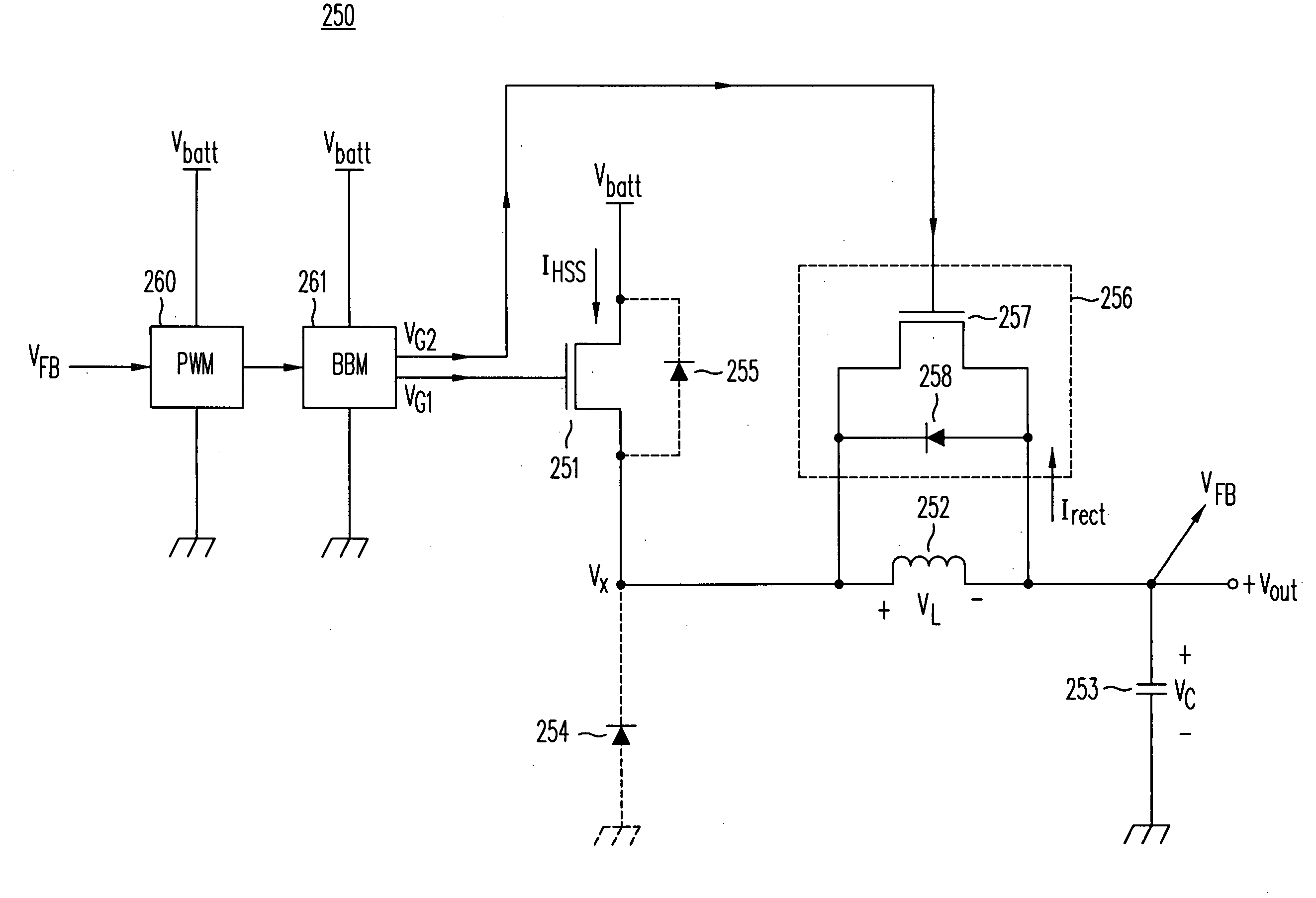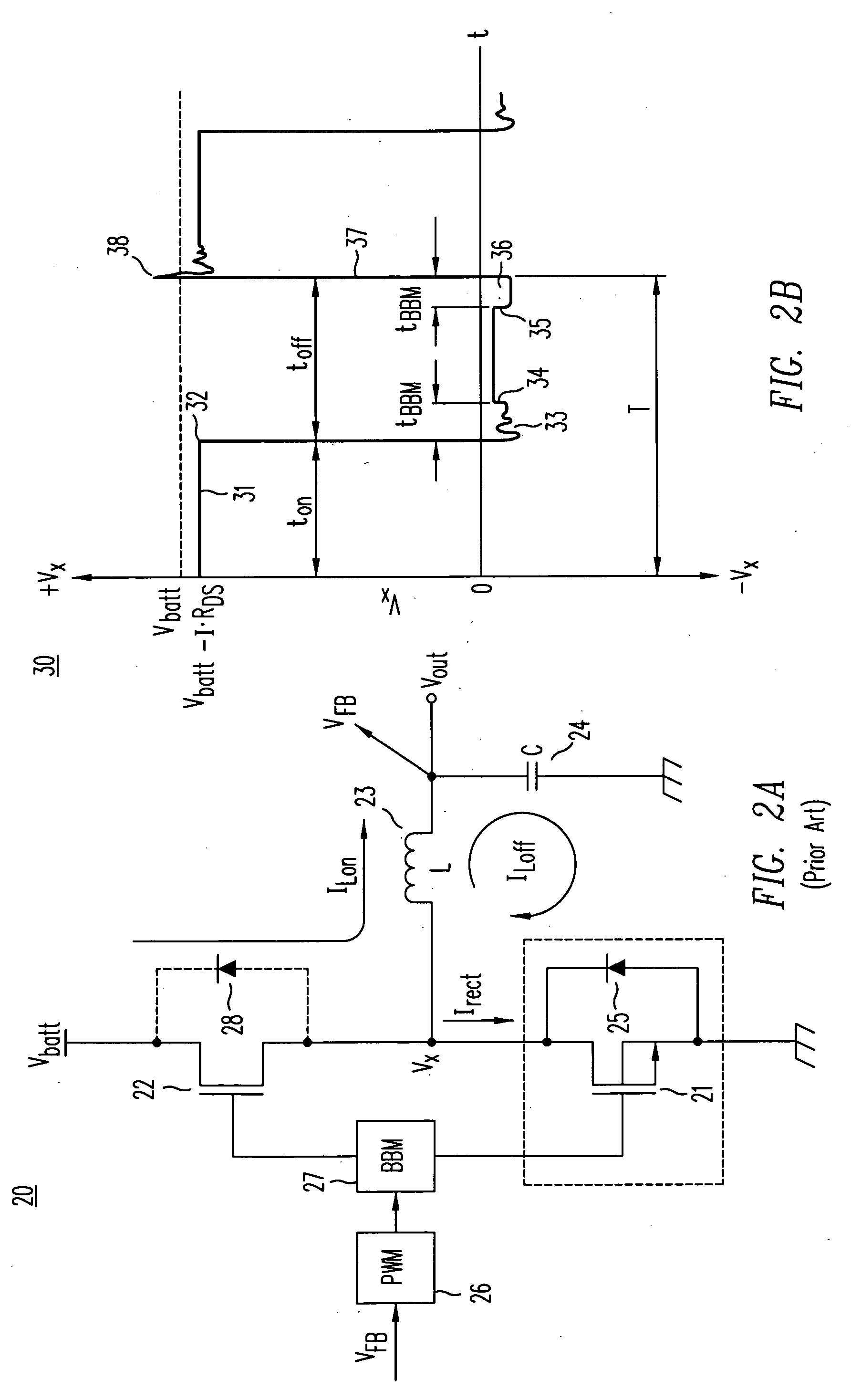Step-down switching regulator with freewheeling diode
a switching regulator and diode technology, applied in the direction of dc-dc conversion, climate sustainability, power conversion systems, etc., can solve the problems of significant and unwanted off-state leakage current, schottky diodes, and low power dissipation in the switch, and achieve high dv/dt and voltage overshoot, and high gate drive loss
- Summary
- Abstract
- Description
- Claims
- Application Information
AI Technical Summary
Benefits of technology
Problems solved by technology
Method used
Image
Examples
Embodiment Construction
[0107]FIG. 6 illustrates one embodiment of the freewheeling step-down converter and switching voltage regulator made in accordance with this invention. As shown, converter 250 comprises a high-side power MOSFET 251, an inductor 252, an output capacitor 253, a freewheeling clamp 256 comprising a diode 258 and a freewheeling power MOSFET 257, break-before-make (BBM) circuitry 261 and a pulse-width modulation (PWM) controller 260. Using feedback VFB from the output terminal of converter 250, operation of PWM controller 260 controls the on-time of MOSFETs 251 and 257 to regulate a specified output voltage VOUT. Feedback circuitry for DC / DC converters is well known in the art and is described, for example, in application Ser. Nos. 11 / 890,818, titled “High-Efficiency DC / DC Voltage Converter Including Down Inductive Switching Pre-Regulator And Capacitive Switching Post-Converter,” and Ser. No. 11 / 890,956, titled “High-Efficiency DC / DC Voltage Converter Including Up Inductive Switching Pre-...
PUM
 Login to View More
Login to View More Abstract
Description
Claims
Application Information
 Login to View More
Login to View More - R&D
- Intellectual Property
- Life Sciences
- Materials
- Tech Scout
- Unparalleled Data Quality
- Higher Quality Content
- 60% Fewer Hallucinations
Browse by: Latest US Patents, China's latest patents, Technical Efficacy Thesaurus, Application Domain, Technology Topic, Popular Technical Reports.
© 2025 PatSnap. All rights reserved.Legal|Privacy policy|Modern Slavery Act Transparency Statement|Sitemap|About US| Contact US: help@patsnap.com



